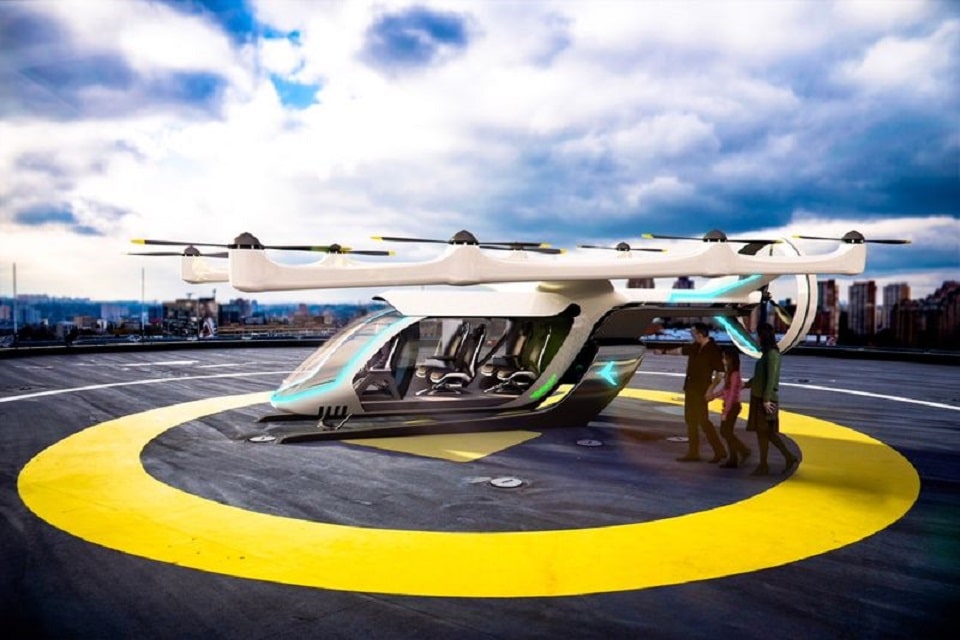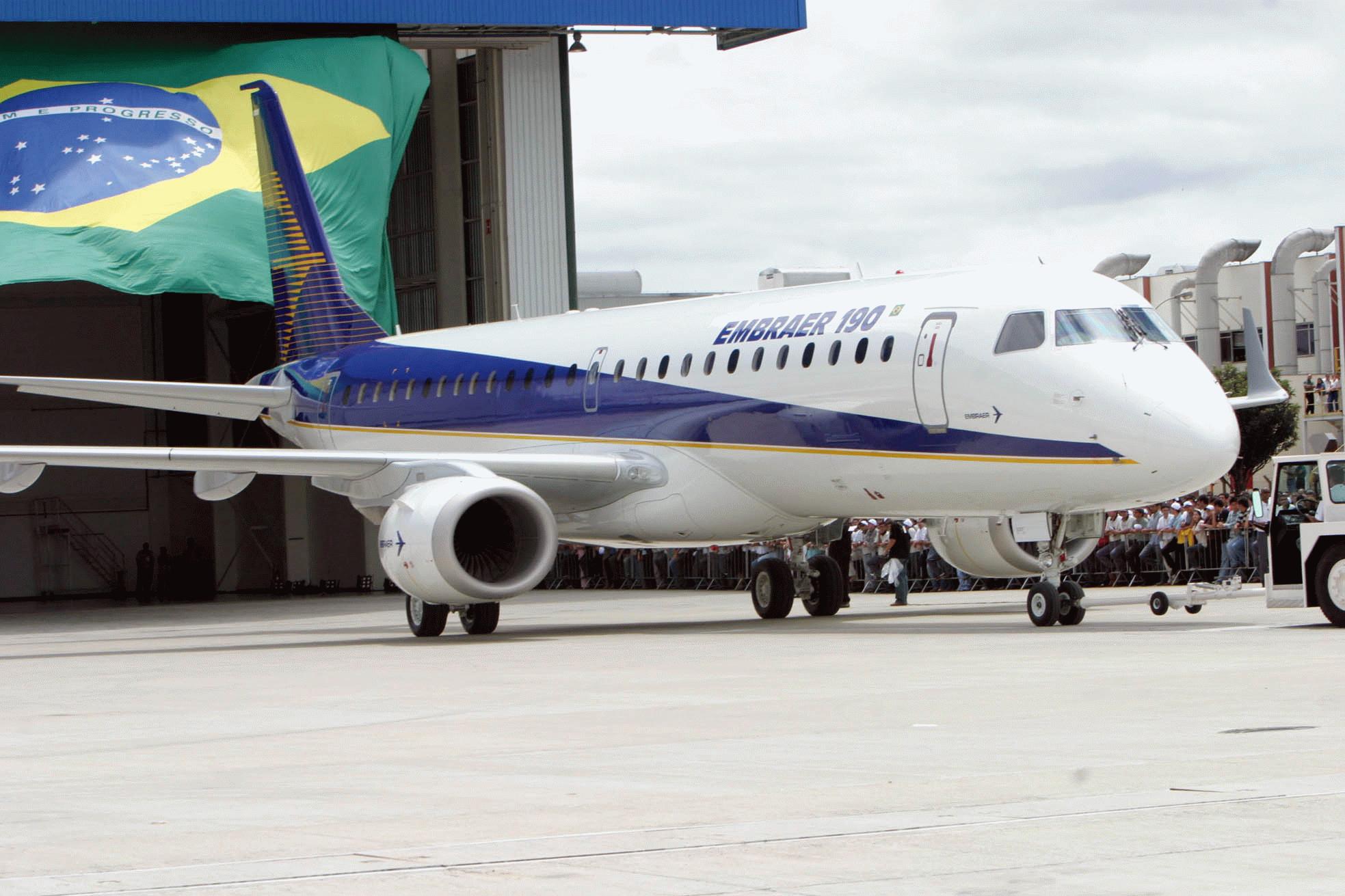Aerospace
Embraer Projects Demand for 1,020 New Deliveries in 70 to 130-Seat Segment in China

Beijing, China, September 16, 2015 – During the China 2015 Aviation Expo taking place at the National Convention Center, Embraer Commercial Aviation released its 2015-2034 Market Outlook for the Chinese market, which presents delivery projections of new aircraft over the next 20 years.
China’s TP500 freight drone makes its maiden flight.(Opens in a new browser tab)
The Company forecasts that 1,020 new jet aircraft in the 70 to 130-seat segment will be delivered in China by 2034. Embraer projects worldwide deliveries of 6,350 jets, in the 70 to 130-seat segment. The value of these deliveries, at list prices, will reach an estimated US$300 billion.


Embraer Commercial Aviation has achieved an 80% share of the regional aviation market in China. Currently, Embraer’s ERJ145 and E190 are serving over 120 airports in more than 400 markets. As of June 30, Embraer had logged 167 firm orders for commercial jets from customers in China, of which 130 have been delivered.
Paulo Cesar Silva, President & CEO, Embraer Commercial Aviation, said: “The aviation industry in China will continue to be robust in the foreseeable future. We believe China’s aviation industry will keep its momentum during the next 20 years and become the largest single-country market in the world.”
China’s economy will remain strong, with a projected annual growth rate of 5.6%. This is one of the drivers that will lead to a 7% annual growth for air travel in China over the next 20 years, and become the highest in the world. “As a world leader in this segment, Embraer is ready to embrace this growth momentum and continue to bridge the current travel gap in the regional market in China,” said Guan Dongyuan, Senior Vice President of Embraer and President of Embraer China.
The report points out that several favorable policies by the central government have had a stimulating effect on the industry: The “One Belt, One Road” initiatives, for instance, a mega-scale blueprint that focuses on the connectivity between countries and regions by all modes of transportation, underscore the importance of air transportation and encourage more regional airlines to launch new routes and improve local air transportation.
The Chinese aviation industry has been reaping the benefits of the central government’s reforms. China’s current Five-Year Plan, under CAAC coordination, includes the construction of 70 new airports and feasibility studies for an additional 28, highlighting the importance of air transportation. The CAAC is also encouraging the introduction of regional aircraft by offering incentives of up to RMB 1 billion per year to the regional aviation industry.
In this context, air transport development will be uneven across the country. Access to air travel in second and third-tier cities will grow twice as fast as in major cities, and the central and western provinces, where there are sufficient time slots and incentives from local governments, will lead the growth in the next two decades. Regulations for new entrants are being relaxed and this has led to a surge in new private airlines. In light of the development of Western and Central China, start-up airlines will exploit the opportunity to operate from small bases, promoting efficiency and profitability throughout the country.
Embraer is also witnessing a more pragmatic trend among airlines, which are changing their metrics of success from market share to shareholder value, in the new landscape. Right-sized aircraft can generate higher revenue and profit per seat, and bring a better return for investors. Embraer E-Jets and E-Jets E2 offer a perfect solution, as they usually command higher average yield. The marginal cost of flying an extra seat is often higher than the lower fare it generates, as larger aircraft introduce surplus capacity that is often sold at widely varying discounts.
“The government’s focus on a new stage of development, combined with the mindset shift to shareholder return in the Chinese airline industry, unveils huge opportunities for regional aviation, which generates enormous demands for jets in the 70 to 130-seat aircraft,” concludes Dongyuan.
About Embraer Commercial Aviation
Embraer is the world’s leading manufacturer of commercial jets that seat up to 130 passengers. Nearly 900 aircraft from the 37, 44, and 50-seat ERJ 145 family of regional jets have been delivered to airlines since their introduction in 1996. The E-Jet family includes four larger aircraft that have between 70 and 130 seats. The E170, E175, E190, and E195 set the standard in their category with their advanced engineering, high degree of efficiency, spacious, ergonomic cabins with two-by-two seating, and attractive operating economics. Since E-Jets entered revenue service in 2004, Embraer has received over 1,650 firm orders for this aircraft family. More than 1,100 have been delivered.

Aerospace
When Ratan Tata was denied entry to the airfield at the Aero India show, he waited

During our visit to Aero India 2019, we had the unexpected opportunity to see Ratan Tata at the event, which was a thrilling moment for us. However, there was a surprising hiccup when the security staff didn’t allow him to enter due to a lack of a security pass.
Despite this, he remained calm and patiently waited for about 20 minutes until a member of the Tata team brought him the required pass, after which he calmly proceeded inside. It was a humbling sight, showcasing his composed demeanor even in such situations.
Ratan Tata ji is not only a renowned industrialist but also a trained pilot, holding a pilot’s license. In 2007, he became the first Indian civilian to fly the F-16 Falcon during the Aero India show in Bangalore—a proud moment for the nation.
His passion for aviation extended beyond flying, as he played a key role in shaping India’s aerospace industry. Under his leadership, Tata ventured into manufacturing and maintaining aerospace components while upholding its legacy of quality. Notably, Tata’s collaboration with Airbus to develop and manufacture the C295 aircraft is a testament to its growing influence in the sector.
-

 Aviation2 months ago
Aviation2 months agoMicrosoft Flight Simulator Raises $3 Million to Bring Back the An-225 Mriya
-

 Airlines2 months ago
Airlines2 months agoQantas Engineers Stage Walkout Over Cost of Living Concerns
-

 Airlines2 months ago
Airlines2 months agoQatar Citizens Can Travel to the United States Without a Visa
-

 Aviation2 months ago
Aviation2 months agoQatar Airways bans these new Electronic Devices on plane
-

 Airlines2 months ago
Airlines2 months agoJapan Airlines Rolls Out Free Domestic Flights to International Passengers
-

 Defence2 months ago
Defence2 months agoWhich Country Has the Largest Fleet of Fighter Aircraft?
-

 Airport2 months ago
Airport2 months agoWestern Sydney Airport Welcomes Its First Plane After 6 Years of construction
-

 Travel2 months ago
Travel2 months agoQatar Airways Launches Four Additional Flights from Amsterdam








